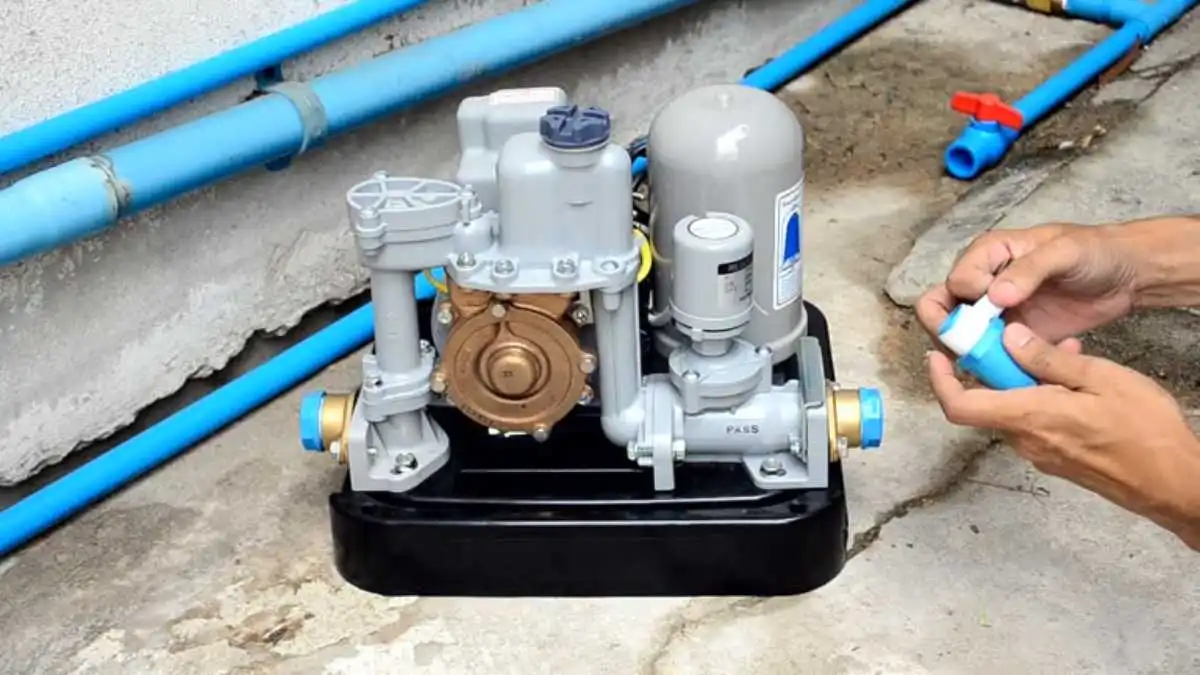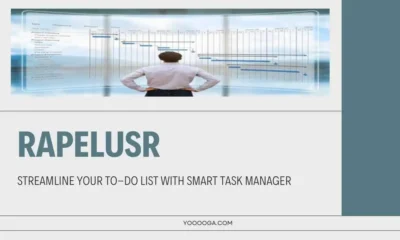HOME IMPROVEMENT
The Importance of Regular Pump Maintenance: Keeping Your System Running Smoothly

For homes and businesses that rely on water pumps, such as sump pumps, sewage pumps, or well pumps, regular maintenance is crucial to ensure continuous operation and prevent unexpected breakdowns. These systems are often responsible for essential functions, such as removing excess water from basements, transferring wastewater to sewer systems, or supplying clean water from a well. A malfunctioning pump can lead to serious problems, including flooding, water damage, and costly repairs. By staying proactive with pump maintenance and scheduling timely inspections, you can extend the life of your pump and avoid major disruptions.
In this article, we’ll explore why regular pump maintenance is essential, what it involves, and how to keep your pump running efficiently year-round.
Table of Contents
1. Preventing Pump Failure with Routine Inspections
Regular inspections are the foundation of good pump maintenance. By scheduling routine checks, you can catch small issues before they become major problems, reducing the risk of pump failure. Even if your pump appears to be functioning correctly, hidden issues could be developing that may lead to failure during a critical moment.
Key Areas to Inspect:
- Electrical Connections: Pumps often rely on electricity, and faulty wiring or loose connections can result in intermittent or complete loss of power. Regularly inspecting and tightening connections ensures that the pump receives a consistent power supply.
- Check the Float Switch: Most pumps, especially sump pumps, are equipped with a float switch that triggers the pump to turn on when water levels rise. A malfunctioning float switch can prevent the pump from activating, leading to potential flooding. Regularly checking and cleaning the float ensures that it moves freely and triggers the pump correctly.
- Inspect Seals and Gaskets: Over time, seals and gaskets on pumps can deteriorate, causing leaks or loss of pressure. Inspecting and replacing worn-out seals during maintenance prevents water damage and ensures the pump operates at full capacity.
Routine inspections are a simple yet effective way to keep your pump system running smoothly and to identify potential issues before they escalate.
2. The Role of Cleaning and Debris Removal
A key aspect of maintaining any pump system is keeping it free from debris and blockages. Dirt, sediment, and other materials can accumulate in the pump’s intake, impeller, or filters, reducing efficiency and potentially causing damage. Regular cleaning helps to maintain the pump’s performance and prevents clogging, which could result in costly repairs.
Steps for Cleaning and Debris Removal:
- Clean the Intake and Discharge Pipes: Over time, debris can collect in the intake or discharge pipes, obstructing the flow of water. Periodically clearing these pipes of any blockages ensures that the pump can move water efficiently and without strain.
- Remove Sediment Buildup: Sediment, especially in well pumps or sewage pumps, can build up around the pump’s impeller or housing, affecting the pump’s ability to move water. During maintenance, disassemble the pump as necessary to clean out any sediment or debris.
- Check for Clogs in Filters or Screens: Many pumps have filters or screens designed to prevent large particles from entering the system. Over time, these can become clogged and restrict water flow. Cleaning or replacing these filters helps maintain optimal water pressure and extends the pump’s lifespan.
By incorporating regular cleaning into your pump maintenance routine, you ensure that debris won’t impede the pump’s performance or cause damage.
3. Protecting Pumps from Freezing in Cold Weather
Cold weather presents a unique challenge for pumps, particularly in regions where temperatures regularly drop below freezing. If water inside the pump or its associated pipes freezes, it can expand and cause serious damage, including cracked pipes, burst seals, or even complete pump failure. Taking preventative steps to protect your pump from freezing is essential during the colder months.
How to Prevent Freezing:
- Insulate Pipes and the Pump: Adding insulation to the pipes connected to the pump, as well as to the pump housing itself, can help prevent freezing. Insulation is particularly important for exterior pumps or those located in unheated areas, such as basements or crawl spaces.
- Heat Tape for Pipes: For additional protection, use heat tape on pipes that are most vulnerable to freezing. Heat tape maintains a constant temperature, preventing ice from forming inside the pipes.
- Run the Pump Regularly: Pumps that sit idle during cold months are more prone to freezing. By running the pump periodically, even if it’s not needed, you keep water moving through the system, reducing the chance of freezing.
- Drain the System When Not in Use: If you don’t need to use the pump during the winter, draining it completely can prevent water from freezing inside and causing damage. This is especially important for seasonal properties where the pump may remain unused for long periods.
By taking these precautions, you can protect your pump from freezing temperatures and avoid costly repairs in the winter months.
4. Extending Pump Lifespan with Proper Lubrication
Like any mechanical system, pumps rely on moving parts to function. Over time, these parts can wear down due to friction, which can result in inefficiencies or breakdowns. Proper lubrication is critical to reducing friction and extending the lifespan of your pump. Regularly checking and maintaining lubrication levels ensures that the pump continues to operate smoothly.
Best Practices for Pump Lubrication:
- Use the Correct Lubricant: Different types of pumps may require specific lubricants, whether it’s oil, grease, or another type of lubricant. Consult the manufacturer’s guidelines to ensure you’re using the correct product for your pump.
- Check Bearings and Moving Parts: Bearings are particularly vulnerable to friction and wear. Regularly check and lubricate the pump’s bearings to keep them functioning efficiently. A lack of lubrication can cause the pump to overheat or fail prematurely.
- Don’t Over-Lubricate: While lubrication is important, too much can cause problems, such as leaking or attracting debris to sensitive components. Follow the recommended lubrication schedule and apply the appropriate amount each time.
Regular lubrication keeps your pump system running efficiently, reduces wear and tear, and helps avoid costly repairs down the line.
5. The Benefits of Professional Pump Maintenance
While some aspects of pump maintenance can be handled by homeowners or business owners, it’s often beneficial to schedule professional maintenance services for more thorough inspections and repairs. Pump systems are complex, and certain issues may not be easily detected without specialized knowledge or tools. A professional inspection can identify potential problems early and provide solutions that prevent major failures.
Advantages of Hiring Professional Services:
- Comprehensive System Check: Professionals can conduct a full inspection of your pump system, including electrical components, pressure levels, seals, and more. This ensures that every part of the system is functioning as it should.
- Early Detection of Problems: Professionals can spot small issues, such as wear on parts or slight leaks, that might not be immediately visible to the untrained eye. Addressing these issues early can prevent more serious problems from developing.
- Expert Repairs: If repairs are needed, professional technicians have the experience and tools to fix problems correctly the first time, reducing the risk of recurring issues.
Working with a service like Seacoast Sewer & Drain ensures that your pump system receives regular maintenance and is kept in optimal working condition, minimizing the risk of costly breakdowns.
6. When to Replace Your Pump
While regular maintenance can extend the life of your pump, all systems eventually reach the end of their operational lifespan. Knowing when to replace your pump is essential to avoid sudden failures that could lead to flooding or water damage.
Signs Your Pump Needs Replacement:
- Frequent Breakdowns: If your pump is constantly breaking down or requiring repairs, it may be more cost-effective to replace the system rather than continue paying for frequent maintenance.
- Reduced Efficiency: A pump that’s no longer operating efficiently, such as one that takes longer to move water or struggles to maintain pressure, may be nearing the end of its life.
- Unusual Noises: Grinding, rattling, or other unusual noises coming from the pump can indicate internal damage that may not be repairable. In these cases, replacing the pump is often the best solution.
By recognizing the signs of pump failure early, you can avoid unexpected breakdowns and ensure your pump installation continues to meet your needs.
Conclusion
Regular pump maintenance is essential for ensuring the efficiency, reliability, and longevity of your system, whether it’s a sump pump, well pump, or sewage pump. From routine inspections and cleaning to protecting the pump from cold weather and ensuring proper lubrication, staying proactive with maintenance can prevent costly repairs and prolong the life of your pump.
For homeowners and businesses looking to keep their pump systems in peak condition, partnering with a professional service like Seacoast Sewer & Drain offers peace of mind, knowing that your system is being cared for by experts. Regular maintenance not only ensures that your pump runs smoothly but also helps you avoid unexpected breakdowns and the associated stress.
-

 GENERAL6 months ago
GENERAL6 months agoChristofle – For Those Who Dream of Family Heirloom Silver
-

 SPORTS8 months ago
SPORTS8 months agoDiscover the World of Football with Streameast: Watch Your Favorite Leagues and Tournaments
-

 GENERAL4 months ago
GENERAL4 months agoUncovering the World of кинокрадко: The Dark Side of Film Piracy
-

 GENERAL2 months ago
GENERAL2 months agoATFBooru: Anime, Gaming, and Subculture Imageboard




























